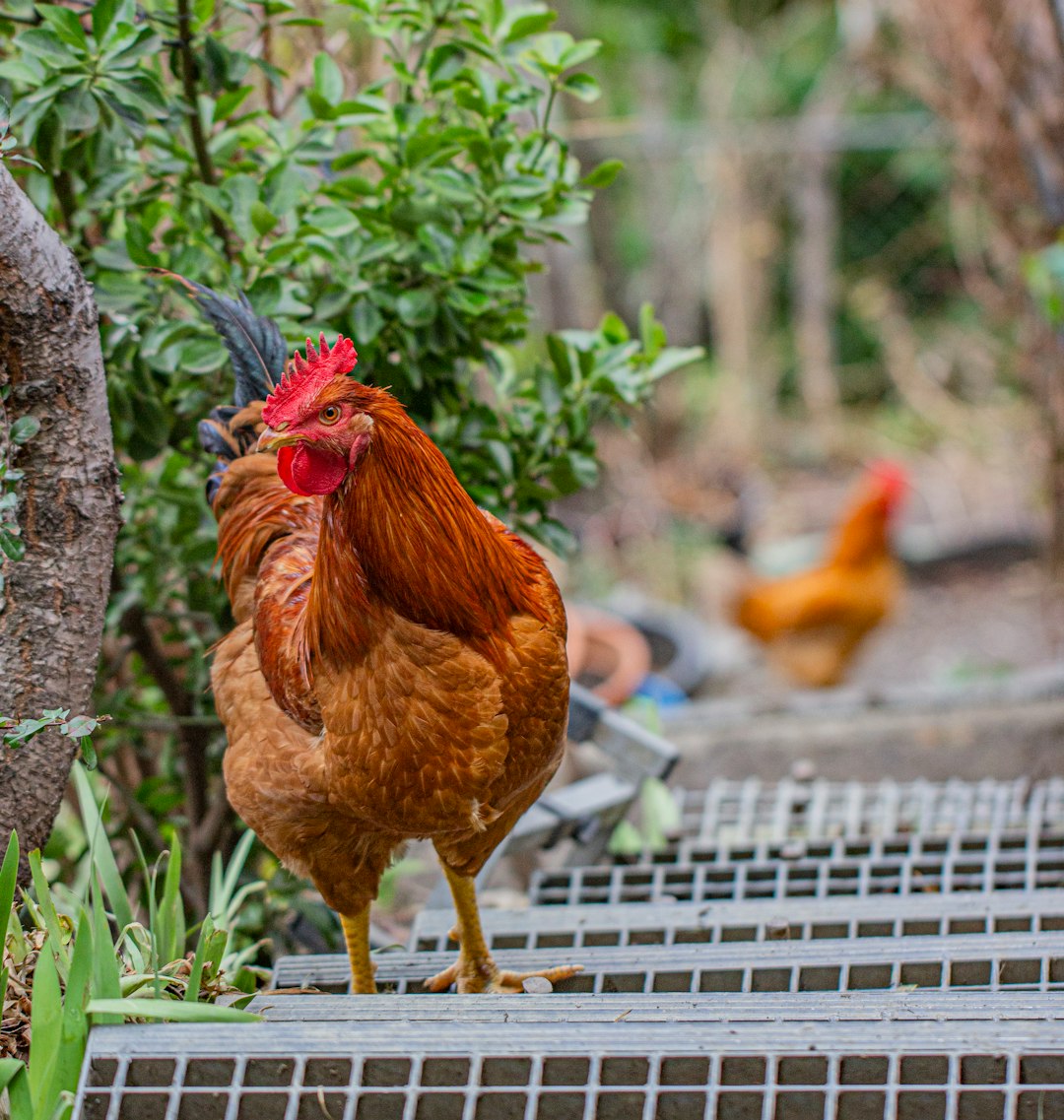Table of Contents
- Introduction
- Origins of Moroccan Spiced Chicken Tagine
- Traditional Ingredients Used
- Spice Blend and Flavor Profile
- Step-by-Step Preparation Process
- Serving Suggestions and Accompaniments
- Health Benefits of the Ingredients
- Popular Variations and Adaptations
- Tips for Cooking the Perfect Tagine
- Conclusion
- Frequently Asked Questions
Introduction
Unlock the Flavors of Morocco: Mastering Spiced Chicken Tagine
Embark on a culinary adventure with Moroccan spiced chicken tagine, a dish that tantalizes your taste buds with a harmonious blend of spices and tender chicken. This traditional North African dish is simmered to perfection in a clay pot, allowing the flavors to meld into a sumptuous, aromatic feast.
Let’s dive into the ingredients you’ll need to create this culinary masterpiece:
- 1 whole chicken, cut into pieces (about 3 pounds)
- 2 large onions, finely chopped
- 3 cloves garlic, minced
- 1 preserved lemon, chopped
- 1 cup green olives
- 1 teaspoon ground ginger
- 1 teaspoon ground cumin
- 1 teaspoon ground cinnamon
- 1 teaspoon turmeric
- 1 teaspoon paprika
- Salt and pepper to taste
- 1/4 cup chopped fresh cilantro
- 1/4 cup chopped fresh parsley
- 2 tablespoons olive oil
- 1 cup chicken broth
Each ingredient plays a crucial role in creating the complex and inviting flavors that make Moroccan cuisine so unique. Ready to transform these ingredients into a delightful tagine? Let’s get started!
Origins of Moroccan Spiced Chicken Tagine
The origins of Moroccan Spiced Chicken Tagine can be traced back to the rich and diverse culinary traditions of Morocco, deeply influenced by Arab, Berber, and Andalusian cultures. The word ‘tagine’ refers to both the unique earthenware pot in which the dish is traditionally cooked and the savory stew that is prepared within it. This ancient cooking method dates back to the time of the Berbers, the indigenous people of North Africa, who crafted these conical clay pots to slow-cook meat and vegetables over a low flame, allowing the spices and ingredients to meld together beautifully.
Arab traders introduced a variety of spices, such as cinnamon, cumin, and saffron, which are essential to the dish’s distinctive flavor profile. The Moorish influence, brought by Andalusians fleeing the Spanish Inquisition, added further depth with the inclusion of dried fruits and nuts. Over centuries, Moroccan Spiced Chicken Tagine evolved as a staple in Moroccan households and festive gatherings, symbolizing hospitality and communal dining. Today, it remains a beloved dish, celebrated for its aromatic spices, tender chicken, and the harmony of sweet and savory elements.
Traditional Ingredients Used
Moroccan Spiced Chicken Tagine is a delightful dish that boasts a rich blend of flavors, thanks to its traditional ingredients. At the heart of this dish are earthy spices like cumin, coriander, and turmeric, which give the chicken its distinct aroma and color. Paprika and cinnamon add layers of depth, while ginger and garlic provide a fragrant kick.
The use of preserved lemons is a hallmark of Moroccan cuisine, offering a tangy, slightly salty contrast to the richness of the spices. Green olives add a briny touch, balancing the flavors perfectly. Saffron, though optional, can be used to infuse the dish with a warm, golden hue and a subtle floral note.
Fresh ingredients like onions, tomatoes, and cilantro are also essential, contributing to the dish’s overall freshness and vibrancy. Olive oil is typically used for cooking, adding a healthy fat that enhances the flavors of the spices. Lastly, the dish is often garnished with fresh parsley or cilantro, adding a pop of color and a burst of freshness just before serving.
Spice Blend and Flavor Profile
The spice blend used in Moroccan Spiced Chicken Tagine is essential to its distinctive and aromatic flavor profile. This blend typically includes a combination of cumin, coriander, ginger, cinnamon, and turmeric. Each spice brings its unique characteristic to the dish: cumin offers earthy notes, while coriander adds a hint of citrus. Ginger brings warmth and a slight bite, whereas cinnamon imparts a sweet, woody aroma. Turmeric, with its golden hue, not only adds color but also a subtle bitterness that balances the flavors.
The combination of these spices creates a complex and harmonious profile that is both savory and slightly sweet. This is further enhanced by additional ingredients such as garlic, onions, and preserved lemons, which infuse the chicken with layers of rich, tangy flavor. The slow-cooking process in a tagine, a traditional Moroccan earthenware pot, allows the spices to meld seamlessly with the other ingredients, resulting in a dish that is incredibly flavorful and aromatic.
Mint and cilantro are often added as garnishes, providing a fresh contrast to the deep, spiced flavors. Understanding the spice blend and flavor profile is key to capturing the essence of Moroccan cuisine in this iconic dish.
Step-by-Step Preparation Process
Preparing Moroccan Spiced Chicken Tagine is a delightful culinary journey that begins with gathering the essential ingredients. First, you’ll need chicken pieces, olive oil, onions, garlic, ginger, and a mix of Moroccan spices such as cumin, turmeric, coriander, cinnamon, and paprika. Additionally, have some preserved lemons, olives, and fresh cilantro on hand.
Start by heating olive oil in a large tagine or a heavy-bottomed pot. Add finely chopped onions and sauté until they are soft and translucent. Stir in minced garlic and grated ginger, cooking for an additional minute. Incorporate the Moroccan spices, stirring continuously to toast them and release their aromatic flavors.
Next, add the chicken pieces, making sure they are well-coated with the spice mixture. Cook the chicken until it is browned on all sides. Introduce preserved lemons, olives, and enough water or chicken broth to cover the chicken halfway. Bring the mixture to a simmer, then reduce the heat to low and cover the tagine.
Let the chicken cook slowly for about 45 minutes to an hour, or until it is tender and infused with the rich flavors of the spices. Finally, garnish with fresh cilantro and serve hot with couscous or bread for a complete Moroccan feast.
Serving Suggestions and Accompaniments
Serving Moroccan Spiced Chicken Tagine is a delightful experience that can be enhanced with the right accompaniments. Traditionally, this rich and aromatic dish is paired with fluffy couscous, which acts as a perfect base to soak up the fragrant sauce. If you prefer, you can also serve it with steamed rice or a side of herbed quinoa for a nutritious twist.
Adding a fresh salad can balance the meal with a burst of crispiness. A simple cucumber and tomato salad dressed with a light vinaigrette complements the deeper flavors of the tagine nicely. For added texture and taste, consider including some roasted or grilled vegetables like bell peppers, zucchini, and eggplant.
To elevate your dining experience further, offer a selection of traditional Moroccan side dishes such as warm, freshly baked flatbreads or khobz, which are great for scooping up the stew. You can also include a variety of olives and preserved lemons to add a tangy element to your meal.
For beverages, consider serving mint tea, a staple in Moroccan cuisine, which provides a refreshing contrast to the savory tagine. Alternatively, a full-bodied red wine can pair wonderfully with the rich spices and hearty ingredients of the dish.
Health Benefits of the Ingredients
Moroccan Spiced Chicken Tagine is a delightful dish not only for its flavors but also for its health benefits, thanks to the nutritious ingredients used. Chicken is a lean protein source that helps in muscle development and supports a healthy immune system. It is also rich in essential vitamins such as B6 and B12, which aid in brain function and energy metabolism.
Another key ingredient, garlic, is well-known for its antiviral and antibacterial properties. It also contains compounds that can help lower blood pressure and cholesterol levels. Onions, often used alongside garlic, are packed with antioxidants and have anti-inflammatory effects.
Spices play a significant role in the health benefits of this dish. Turmeric, for instance, contains curcumin, a powerful anti-inflammatory and antioxidant. Cumin aids in digestion and boosts the immune system, while cinnamon can help regulate blood sugar levels. The use of fresh vegetables such as tomatoes and bell peppers adds fiber, vitamins, and minerals, promoting overall well-being.
In summary, the ingredients in Moroccan Spiced Chicken Tagine offer a variety of health benefits, making it a nutritious choice for any meal.
Popular Variations and Adaptations
Moroccan Spiced Chicken Tagine is a flavorful and aromatic dish, but what makes it truly versatile are the popular variations and adaptations that can be found across different regions and households. Some common adaptations include the addition of various vegetables like carrots, zucchini, or potatoes, which can enhance the nutritional value and flavor profile of the dish.
Another popular variation is the use of different proteins such as lamb, beef, or fish. Each protein type absorbs the myriad of spices differently, offering a unique taste experience.
For those who prefer a vegetarian or vegan option, chickpeas and an array of vegetables can be substituted for the meat, providing a similar rich and hearty texture.
The blend of spices can also be adjusted to suit personal preferences; while traditional recipes call for ingredients like cumin, coriander, and turmeric, some people might opt for milder or more robust flavors by tweaking the spice mix.
Additionally, some chefs like to add dried fruits such as apricots or raisins for a hint of sweetness that contrasts beautifully with the savory spices. These variations and adaptations ensure that Moroccan Spiced Chicken Tagine remains a beloved dish, adaptable to various tastes and dietary needs.
Tips for Cooking the Perfect Tagine
Cooking the perfect Moroccan Spiced Chicken Tagine requires some key tips to ensure authenticity and flavor. Firstly, invest in a good-quality tagine pot, as it helps to evenly distribute heat and retain moisture. If you don’t have a tagine, a heavy-bottomed Dutch oven can be a suitable alternative. Secondly, marinate the chicken with a blend of spices such as cumin, coriander, turmeric, ginger, and cinnamon for at least a couple of hours, preferably overnight, to allow the flavors to penetrate the meat.
Another important tip is to sauté your onions and garlic until they are soft and translucent before adding your marinated chicken. This creates a rich base for your dish. When layering the ingredients in the tagine, always place hard vegetables like carrots and potatoes at the bottom as they require more cooking time. Additionally, keep the lid on and maintain a low to medium heat to ensure the chicken cooks slowly and absorbs all the spices.
Lastly, don’t forget to add preserved lemons and olives, which are essential ingredients in Moroccan cuisine, providing that distinctive tangy flavor. Serve the tagine with couscous or flatbread to soak up the delicious sauce. Following these tips will help you achieve a flavorful and aromatic Chicken Tagine.
Conclusion
Mastering Moroccan Spiced Chicken Tagine offers a delightful culinary journey through Morocco’s rich heritage, tantalizing spices, and unique preparation methods. From its historical origins to the carefully selected ingredients and step-by-step instructions, this dish embodies the essence of Moroccan hospitality.
Whether you’re a seasoned cook or a newcomer to Moroccan cuisine, our comprehensive guide ensures a flavorful and aromatic tagine every time. And if you’re eager to further elevate your chicken dishes with an array of inventive recipes, The Chicken Bible: Say Goodbye to Boring Chicken with 500 Recipes for Easy Dinners, Braises, Wings, Stir-Fries, and So Much More is a must-have. This book is packed with inspiration, making it easy to transform everyday meals into extraordinary culinary experiences. Buy your copy today and unlock the full potential of your kitchen!

